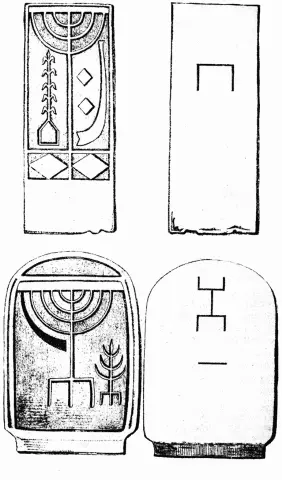915Pecheneg Turks make peace with Prince Igor of Kievan Rus (Russia).
922Arab scholar Ibn Fadlan travels through Volga region.
932War between Khazars and Alans ends in Khazar victory.
941Failure of Kievan Rus assault upon Byzantine Empire by land and sea.
943Rus raid Muslim territories in south Caspian region.
945Peace agreement between Kievan Rus, Bulgaria and Byzantine Empire.
954–961Correspondence between Hazdai ibn Shafrut (Shaprut), Jewish senior secretary of the Caliph of Cordoba (Spain and Portugal), and the Khazar Khagan or Beg (military commander) Joseph Ben Aaron.
965Grand Prince Svyatoslav Igorevich I of Kievan Rus conquers Khazar Sarkel and Tamatarkha (Tmutarakan).
968 or 969Svyatoslav Igorevich captures Khazar capital of Atil, effectively bringing the Khazar Khaganate to an end.
977–985Atil occupied by Khwarazmshahs (Muslim rulers of Khwarazm, south of Aral Sea), followed by gradual conversion of most Khazars to Islam.
985Grand Prince Vladimir Svyatoslavich of Kievan Rus campaigns down Volga River against now fragmented Khazars.
1048Muslim scholar al-Biruni describes Atil as being in ruins.
1079Prince Oleg Svyatoslavich, exiled ruler of Chernigov, is seized by Khazar ruler of Tmutarakan and sent as prisoner to Byzantine emperor.
1083Oleg Svyatoslavich returns to Tmutarakan and declares himself Archon (Byzantine governor).
Khazar rulers
Kozar (undated) Traditionally, the ancestor of the Khazar people.
Karadach ( c. AD 450) King of the Akatziroi, according to Priscus a steppe people allied to the Huns.
(From mid-5th to early 7th centuries AD, tribal leaders are unknown.)
Ziebal ( 618–630) Perhaps the same as Tong Yabghu, ruler of the Western Turkic Khaganate.
Bori Shad ( 630–650) Probable leader of tribes north-west of the Caucasus, under Western Turkic rule.
Irbis ( c. 650) Recorded in traditional Russian sources as founder of the Khazar Khaganate.
Khalga ( mid-660s) Mentioned only in the 17th-century Tatar Cagfar Tarixi.
Kaban ( late 660s) Mentioned only in the 17th-century Tatar Cagfar Tarixi.
Busir ( c. 690–715) The first confirmed, dateable Khazar Khagan.
Barjik ( late 720s–731) Described as ‘the son of the Khagan’, who led Khazar armies against the Islamic Caliphate.
Bihar ( c. 732) An ally of the Byzantine Empire.
Prisbit ( late 730s) A female name◦– perhaps a regent rather than a ruler?
( 737–c. 740: Khazaria under the authority of the Muslim Umayyad Caliphate.)
Baghatur ( c. 760) Perhaps ruler of Khazaria, although Ras Tarkhan is also mentioned as ruler or military commander.
Khan Tuvan ( c. 825–830) Also known as Dyggvi.
Tarkhan ( 840s) Also the title of the Khazar military commander.
Zachariah ( c. 861) Mentioned only in a Russian source.
Bulan Gabriel ( c. 740) Khagan or Beg who led the conversion of the Khazar ruling elite to Judaism; he and subsequent Khazar rulers until Aaron II are only mentioned in the correspondence of Hasdai ibn Shaprut.
Obadiah ( c. 786–809) Khagan or Beg, described as ‘one of the sons of the sons of Bulan’.
Hezekia ( mid-9th century) Khagan or Beg, son of Obadiah.
Manasseh I ( mid- to late 9th century) Khagan or Beg, son of Hezekia.
Hanukkah ( mid- to late 9th century) Khagan or Beg, son of Obadiah.
Isaac ( mid- to late 9th century) Khagan or Beg, son of Hanukkah.
Zebulun ( late 9th century) Khagan or Beg, son of Isaac.
Manasseh II ( late 9th century) Sometimes called Moshe; Khagan or Beg, son of Zebulun.
Nisi ( late 9th century) Khagan or Beg, son of Manasseh II.
Aaron I ( late 9th or early 10th century) Khagan or Beg, son of Nisi.
Menahem ( late 9th or early 10th century) Khagan or Beg, son of Aaron I.
Benjamin ( late 9th or early 10th century) Khagan or Beg, son of Menahem.
Aaron II ( 920s–939 or 940) Khagan or Beg, son of Benjamin.
Joseph ( 939 or 940–965) Khagan or Beg, son of Aaron; corresponded with Hasdai ibn Shaprut of Cordoba, and probably ruled during the collapse of the Khazar Khaganate.
David ( c. 986–988) Probable ruler of a small Khazar successor-state on the Taman peninsula that was apparently called Tmutarakan.
Georgius Tzul (unknown until 1016) Ruler of Kerch, in Tmutarakan on the Taman peninsula; perhaps converted to Orthodox Christianity.

Khazar carved stone slabs with various motifs, including Jewish seven- and nine-branched menora candelabra, and perhaps (top left) a shofar ram’s-horn trumpet. (Archive of M Zhirohov)
ARAB-KHAZAR WARS, 7th–8th CENTURIES
Emergence of Derbent frontier zone, AD 642–692
The first wave of Muslim Arab conquests rapidly thrust aside the armies of both the Byzantine and Sassanian empires to reach areas immediately south of the Caucasus, and in 640 Arab forces invaded Armenia. Nearby, the Khazars had dominated Azerbaijan since 632, so the sudden approach of the victorious Arabs caused them to seek allies. The first recorded clash between Muslims and Khazars was in 642, when Arab raiders reached Derbent at the narrowest point between the Caucasus mountains and the Caspian coast. The following year the Muslims pushed beyond Derbent, towards the Khazars’ then-capital at Balanjar; meanwhile, in Armenia, in 645–646 the Caliph’s army defeated a Byzantine force which included both Khazar and Alan allies. Seven years later a Muslim army of conquest complete with siege engines attacked Balanjar, but in the resulting battle the Khazars reportedly also used siege weapons and ballistas, killing the Muslim commander and driving back his army.
Turmoil within the Islamic world now enabled several frontier areas to regain virtual independence, including Armenia, Georgia, and Azerbaijan. However, the establishment of the Umayyad Caliphate in 661 resulted in the creation of a huge, stable, remarkably efficient and militarily effective state centred in Syria. Although the Islamic conquests resumed, the Khazars also remained powerful and expansionist, striking south of the Caucasus in 684. This was apparently in response to the actions of Alp, the Christian Ilutuer or vassal ruler of the Khuni people of the northern Caucasus (who may themselves have been a relic of the Hun Empire which had collapsed more than two centuries earlier). Alp’s raiding of Khazar territory provoked retaliation which devastated several areas and killed several local rulers; the Khazars also levied a heavy tribute.
Much of Armenia was nevertheless now under Muslim suzerainty, and in 692 the caliph’s governor, Muhammed ibn Marwan, retook Derbent and tried to establish a strong frontier zone against future Khazar aggression. This strategic region changed hands several times, while both sides also watched with interest the political turmoil in the Byzantine Empire. In 713, Habib ibn Maslama forced back an invading Khazar army with difficulty, but then regained Derbent after a three-month siege◦– though only when a local citizen betrayed a subterranean passage into the fortress. Believing Derbent to be indefensible with his available forces, Habib ordered its fortifications razed before pushing north deeper into Khazar territory. He reached Samander (now Tarku), where the Khazar army made a stand. For several days champions from each side duelled in the space between the two armies before Habib, recognizing his numerical inferiority, abandoned his baggage train, and led his army back to Georgia while the Khazars were preoccupied with looting the Muslims’ abandoned camp.
Читать дальше













